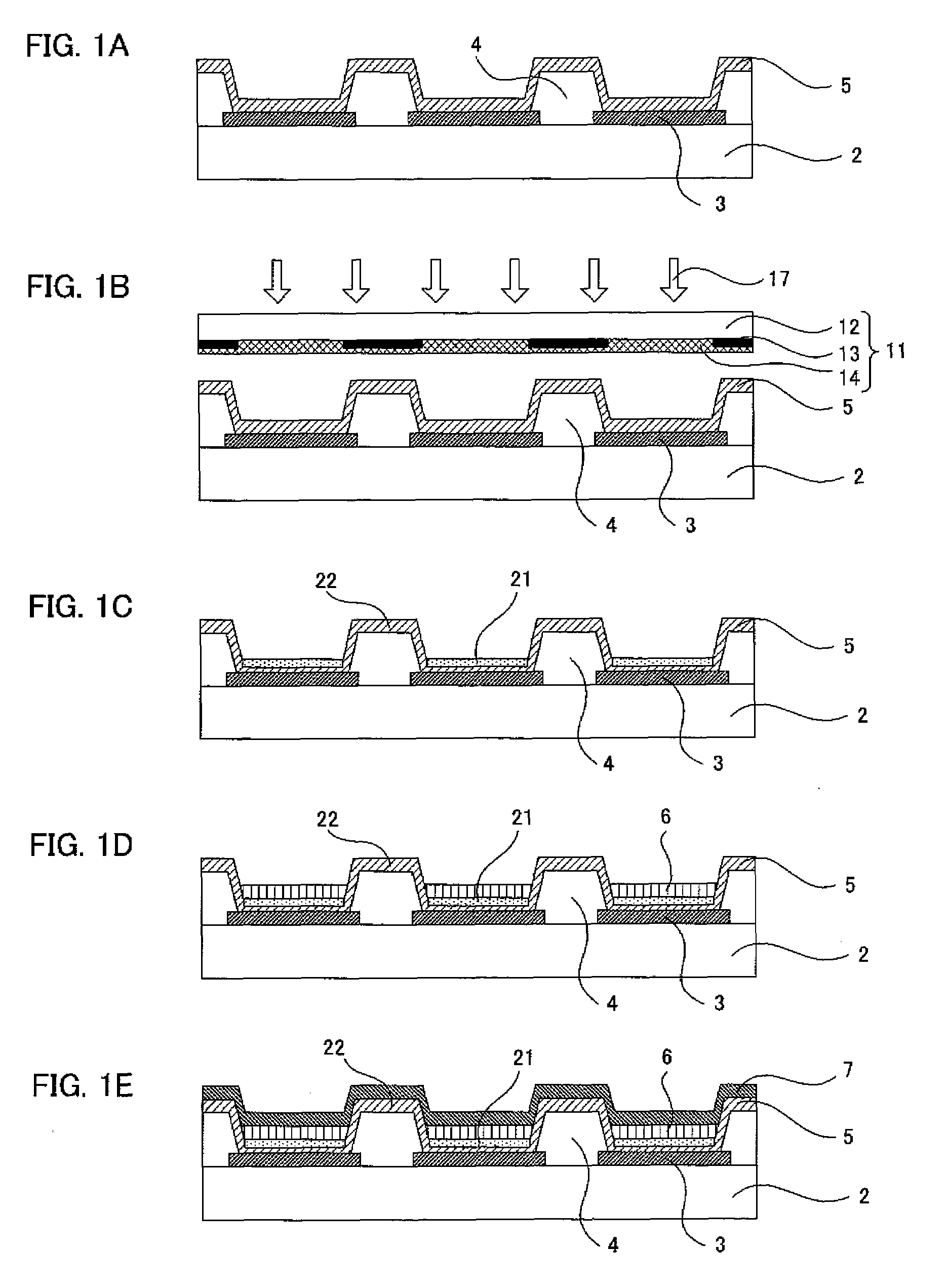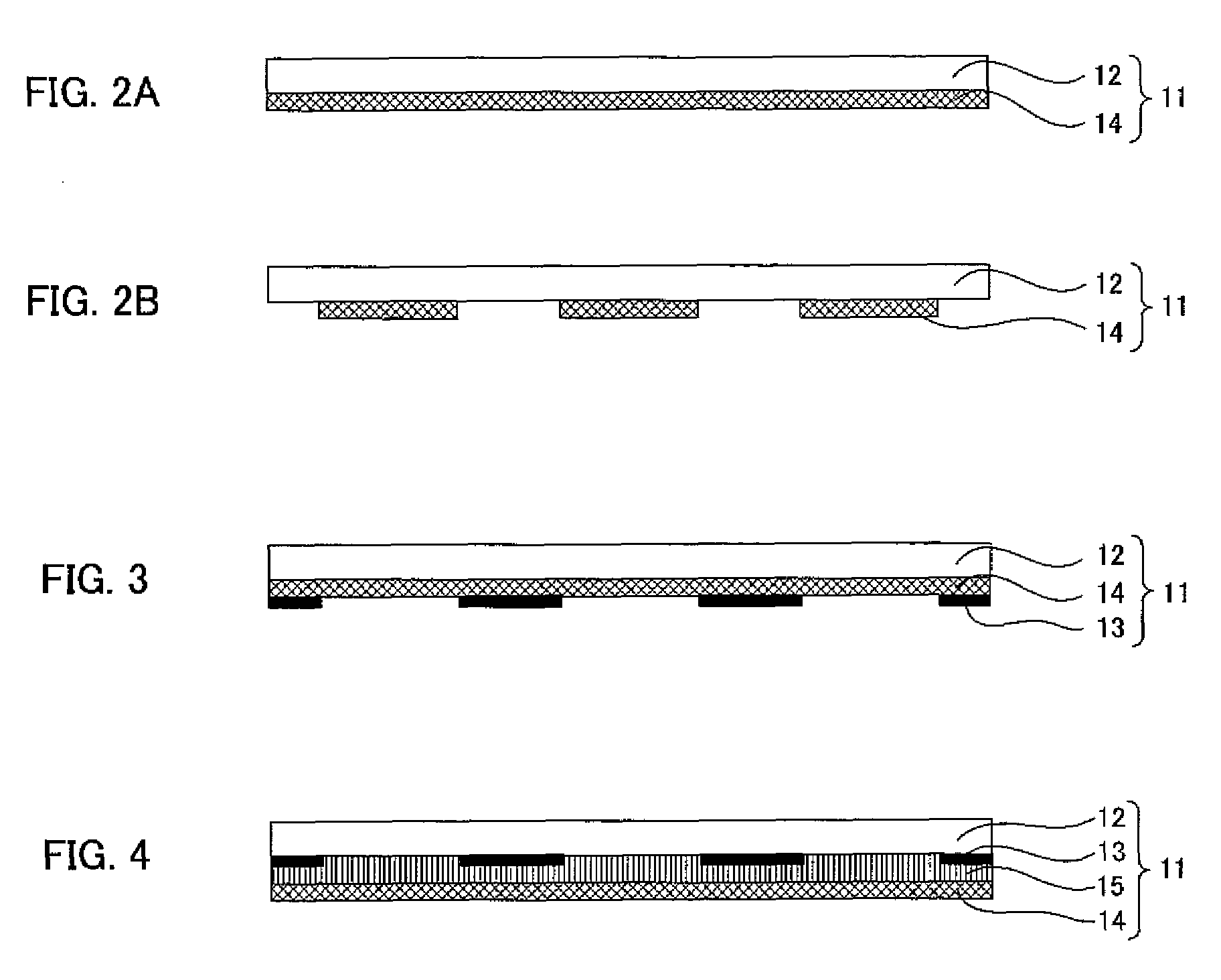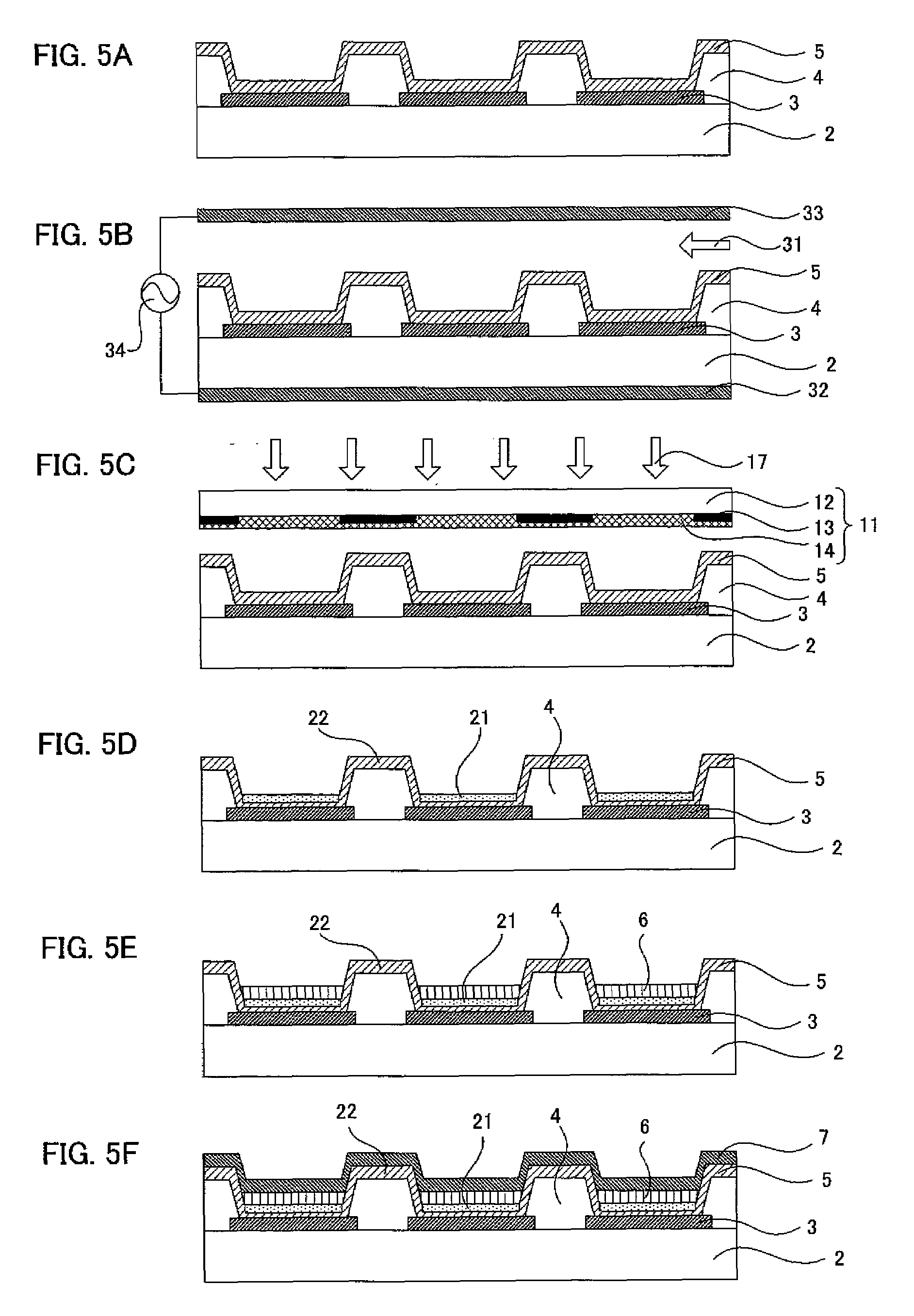Manufacturing method of organic electroluminescence element
- Summary
- Abstract
- Description
- Claims
- Application Information
AI Technical Summary
Benefits of technology
Problems solved by technology
Method used
Image
Examples
first embodiment
I. First Embodiment
[0030]First embodiment of the manufacturing method of an organic EL element comprises: a charge injecting and transporting layer forming step of forming, on a substrate with an electrode layer formed, a charge injecting and transporting layer containing a material having a liquid repellent functional group so as to have a wettability change by an action of a photocatalyst accompanied by energy irradiation; a wettability changed pattern forming step of forming a wettability changed pattern with wettability changed on a surface of the charge injecting and transporting layer by the energy irradiation in pattern after disposing a photocatalyst processing layer substrate, in which a photocatalyst processing layer containing at least a photocatalyst is formed on a base member, with a gap capable of providing the action of the photocatalyst accompanied by the energy irradiation to the charge injecting and transporting layer; and an organic electroluminescence layer formi...
second embodiment
II. Second Embodiment
[0226]The second embodiment of a manufacturing method of an organic EL element of the present invention comprises: a charge injecting and transporting layer forming step of forming a charge injecting and transporting layer on a substrate with an electrode layer formed; a liquid repellent process step of processing the charge injecting and transporting layer surface to be liquid repellent; a wettability changed pattern forming step of forming a wettability changed pattern with wettability of the charge injecting and transporting layer surface changed by the energy irradiation in pattern after disposing the photocatalyst processing layer substrate, in which a photocatalyst processing layer containing at least a photocatalyst formed on a base member, with a gap capable of providing the action of the photocatalyst accompanied by the energy irradiation to the charge injecting and transporting layer with the liquid repellent process applied; and an organic EL layer fo...
example 1
(Formation of the Electrode Layer and the Insulation Layer)
[0292]First, a substrate comprising a glass substrate having an ITO film as the electrode layer formed in pattern of an 80 μm line width, a 20 μm space width and a 100 μm pitch was prepared.
[0293]Then, an insulation film was formed on the entire surface of the above-mentioned substrate by applying a positive type photosensitive material (OFPR-800, produced by Tokyo Ohka Kogyo Co., Ltd.) by the spin coating method so as to have a 1.5 μm film thickness. Then, exposure was carried out using a photo mask having a rectangular opening part of a 70 μm lateral width and a 70 μm longitudinal width, and development was executed with an alkaline developing solution (NMD-3, Tokyo Ohka Kogyo Co., Ltd.). Subsequently, by the heat curing process was carried out at 250° C. for 30 minutes, an insulation layer was formed in the opening part of the electrode layer.
(Formation of the Hole Injecting Layer)
[0294]A hole injecting layer forming coat...
PUM
 Login to View More
Login to View More Abstract
Description
Claims
Application Information
 Login to View More
Login to View More - R&D
- Intellectual Property
- Life Sciences
- Materials
- Tech Scout
- Unparalleled Data Quality
- Higher Quality Content
- 60% Fewer Hallucinations
Browse by: Latest US Patents, China's latest patents, Technical Efficacy Thesaurus, Application Domain, Technology Topic, Popular Technical Reports.
© 2025 PatSnap. All rights reserved.Legal|Privacy policy|Modern Slavery Act Transparency Statement|Sitemap|About US| Contact US: help@patsnap.com



